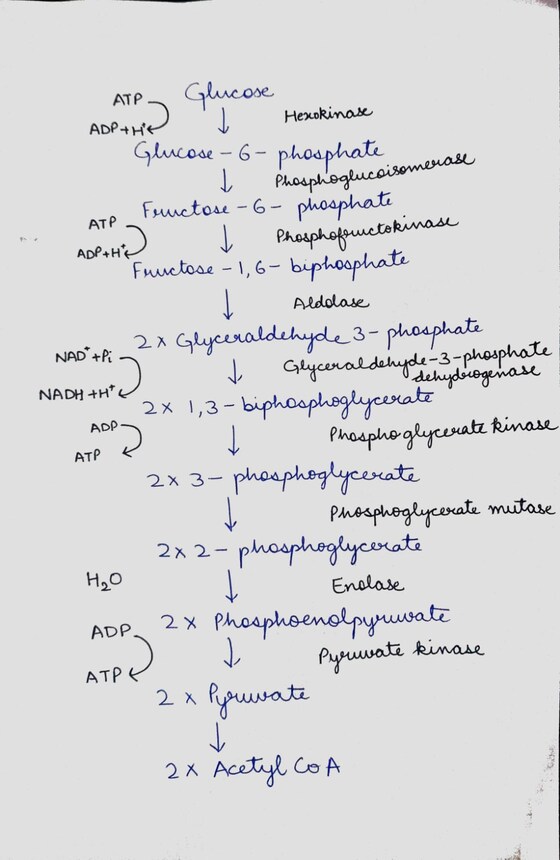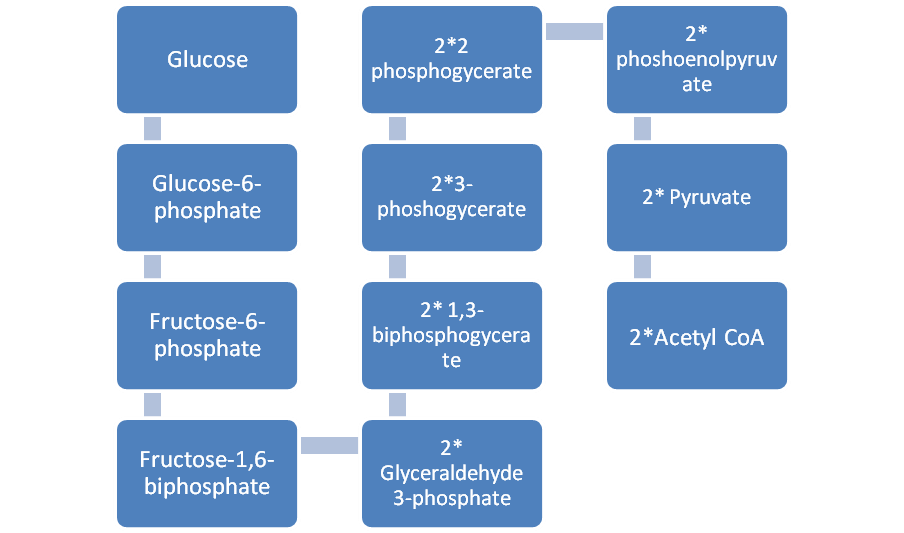EMP Pathway Full Form
What is the full form of EMP?
The process through which food molecules are broken down into usable energy Adenosine triphosphate (ATP) for our bodies is called Embden-Meyerhof-Parnas, or EMP. The process of converting glucose into less complex molecules is known as glycolysis. For this procedure to enter the mitochondria, glucose must first be changed into pyruvate. This procedure takes place in the cytoplasmic cytoplasm. Within the mitochondria, interactions between glucose and oxygen take place. The three listed reactions, which take place one after another, are the most crucial in glycolysis.
First, the Embden-Meyerhof Pathway, which involves the breakdown of glucose into two pyruvate molecules, is the first reaction during glycolysis.
Pyruvate is broken down into two molecules of Acetyl-CoA in the second process, which is then used in the mitochondria for the third reaction.
In the third process, acetyl-CoA enters the mitochondrial cascade, broken down into ATP and adenosine triphosphate, two forms of usable energy.
Working
With the support of enzymes, glucose (C6H12O6) is converted into pyruvate (C3H4O3) during the process known as glycolysis. This reaction occurs in the cytosol, and Acetyl-CoA then enters the mitochondria, which is converted into ATP by special enzymes. Our body then uses this ATP as a source of energy for things like the heart, muscles, and brain. Every living cell has this route, which enables us to convert glucose into pyruvates. Pyruvates are transformed inside the mitochondria into Acetyl-CoA, which subsequently moves into the citric acid cycle. The Krebs Cycle and Tricarboxylic Acid (TCA) Cycle are other names for the Citric Acid C
cycle. Utilising enzymes (pyruvate dehydrogenase and lactic acid dehydrogenase), acetyl Co-A creates an ATP molecule.

Functions
By converting glucose into pyruvate, it gives electrons to the cells. This procedure is crucial to our body's functioning.
Every cell system in our body needs ATP, including the heart, muscles, and brain; thus, Acetyl-CoA joins the Krebs cycle to produce ATP.
Pyruvate, a result of glycolysis, enters the mitochondria and is changed into Acetyl-CoA, which is then used in the citric acid cycle to create ATP.
Because it supplies the energy needed for life, this pathway is crucial for our body's function.
Every biological cell contains this route, which enables us to convert glucose into pyruvate.
Importance
It falls under the category of illnesses since some persons have conditions (like diabetes) that are directly or indirectly related to the decline in activity of this route. As we all know, increasing the amount of food molecules in our diet is necessary to maintain good health and strength. This may be done by consuming more fruits, vegetables, and other plant-based foods. It is well acknowledged that less food molecules are broken down during glycolysis when mitochondrial activity is reduced. Additionally, increasing food molecules aids in changing this pathway's orientation and raising pyruvate generation. In this situation, PGH2 can become PGG1.
Frequently Asked Questions (FAQs)
6 ATP molecules are created by 2NADH. The EMP pathway can generate a total of 8 ATP molecules in the respiratory chain.
Energy production is one of its possible uses. Both the liver and the muscles store it as glycogen. Any tissue that has a significant amount of glucose available for this utilisation is where it is also stored.
As the body's primary source of energy, this route is significant. To create ATP, a useful source of energy, the process begins in the cytosol and then transfers into the mitochondria.
Through the conversion of pyruvate to acetyl CoA and the interaction with the tricarboxylic acid (TCA) cycle, the EMP pathway can take place both aerobically and anaerobically.
